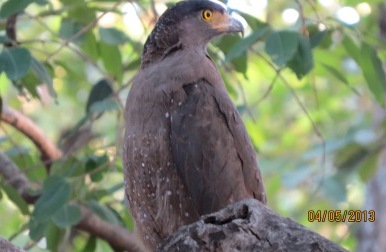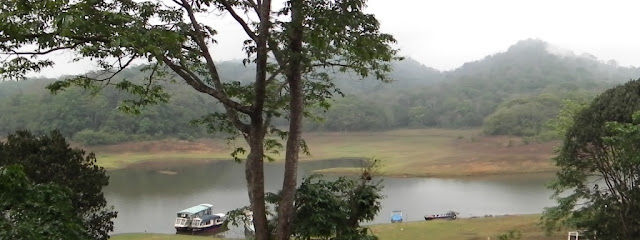Hi everyone. Its good to be back after a long break.
There were several reasons for it. Foremost amongst them, the sense of achievement (not something great actually), on reaching the 100-post mark. Then, there was the realization that it would soon be 22 years that I have spent in making a career in a city, away from the small town where I studied and spent my childhood and school days. Also, the fact that this year my son started junior college made me remember my college days. Time seems to have really flown by. Reminds me of the lyrics, Funny how it feels just like yesterday - (Bad Company).
There were several reasons for it. Foremost amongst them, the sense of achievement (not something great actually), on reaching the 100-post mark. Then, there was the realization that it would soon be 22 years that I have spent in making a career in a city, away from the small town where I studied and spent my childhood and school days. Also, the fact that this year my son started junior college made me remember my college days. Time seems to have really flown by. Reminds me of the lyrics, Funny how it feels just like yesterday - (Bad Company).
In the lifetime of Earth, twenty years is a blip on the radar, a blink of the eye-lids - here today, gone tomorrow. But the sad fact remains; reckless human development has lead to environment degradation of such massive scale that the world as we know it today would no longer be the same in the next twenty years.
Fewer bird sightings
There has been an overall decrease in the variety and number of bird sightings this winter.
Personally, I have noticed that there have been no sightings of the green bee-eater this year in Thane. Thirty years ago, I distinctly recollect hundreds of noisy birds roosting for the night on rain trees (in Hutti Gold Mines). One factor behind the reduced numbers of bee-eaters could be illegal sand mining by the sand mafia all over India. As the bee eaters nest by tunneling in sandy river banks, the destruction of nesting sites can seriously affect their population. Consider then, there could be innumerable such instances of habitat destruction, threatening the very existence of other birds and animals. This is a very grim scenario.
These photographs of the Green Bee-eater are from my archive:
Silver lining in the dark clouds: I spotted a Shikra:
Five minutes to midnight
Although not all claims made by the Intergovernmental Panel on Climate Change (IPCC) lead by Dr. Rajendra Pachauri, the more recent one about being “five minutes from midnight”, can be taken at face value, we are witness to very rapid destruction of the natural environment. Large tracts of forest land is lost to construction of human habitats or agriculture (Maharashtra lost more than 2,100 sq km of forest area in past 2 decades – TOI, Dec 26, 2013). This means No more walks in the woods – (Eagles).
Long term consequences of such continued human activity on the Earth’s ecosystem would be very hard to predict. Some scientists point to the increase in atmospheric carbon dioxide, melting of ice-caps and unpredictable world-wide weather [(Mass power cuts continue in US and Canada after storm- BBC, Dec 26, 2013), (Storms return to batter UK as thousands without power – BBC, Dec 27, 2013), (Super typhoon Haiyan in Philippines), and (Cyclone Phailin in Orissa)], as incontrovertible evidence that the climate is adversely affected.
An increase in the frequency and ferocity of storms is predicted as we near the threshold of no return. The changes brought about by humans are difficult to reverse and development will of course, continue without pause – until the threshold is breached.
Resolutions for the New Year
Each one of us, in our limited life-times, must play our part in mitigating the environmental destruction of Earth. Make it a better place, for you and me - (Michael Jackson).
So, here are some New Year resolutions that we can practice.
Avoid carbonated drinks: since many of the manufacturers utilize ground water for bottling
Reduce plastics: use cloth bags for shopping; prefer glass bottles over plastic ones, wherever available
Save water: reduce water consumption by using a low flush toilet tank
Stop treating the earth as an open air garbage bin: don’t throw waste onto the railway tracks / streets / highways
Stop polluting the water bodies: don’t dispose floral waste into our rivers and creeks
Save electricity: use solar power for house-hold lighting few hours every day, if you can afford it.
Use rechargeable batteries: stop using disposable batteries manufactured by those responsible for India’s worst human and environmental tragedy. Bhopal, 1984: Do you remember?
Shop for items manufactured by environment friendly companies (those with ISO 14000 certification), wherever such alternative exists
Plant a tree: you can do this in your society garden
Save electricity: switch off all appliances from the plug-points. If you use an AC, set the thermostat at 24°C
Save fuel: If you commute to office using a bike / car, use public transport once a month.
Readers who wish contribute their environment friendly resolutions are welcome to do so.
Avoid carbonated drinks: since many of the manufacturers utilize ground water for bottling
Reduce plastics: use cloth bags for shopping; prefer glass bottles over plastic ones, wherever available
Save water: reduce water consumption by using a low flush toilet tank
Stop treating the earth as an open air garbage bin: don’t throw waste onto the railway tracks / streets / highways
Stop polluting the water bodies: don’t dispose floral waste into our rivers and creeks
Save electricity: use solar power for house-hold lighting few hours every day, if you can afford it.
Use rechargeable batteries: stop using disposable batteries manufactured by those responsible for India’s worst human and environmental tragedy. Bhopal, 1984: Do you remember?
Shop for items manufactured by environment friendly companies (those with ISO 14000 certification), wherever such alternative exists
Plant a tree: you can do this in your society garden
Save electricity: switch off all appliances from the plug-points. If you use an AC, set the thermostat at 24°C
Save fuel: If you commute to office using a bike / car, use public transport once a month.
Readers who wish contribute their environment friendly resolutions are welcome to do so.
Help save the environment and make it a better place.





















































